Tauno E. Maki
Era: World War II
Military Branch: Air Force
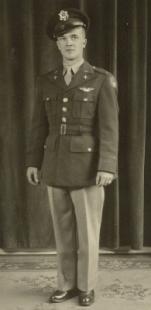
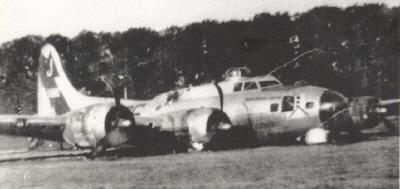
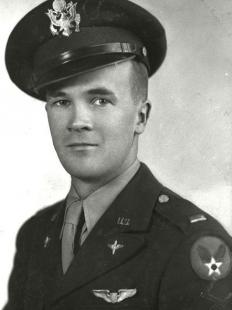
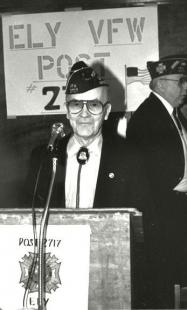
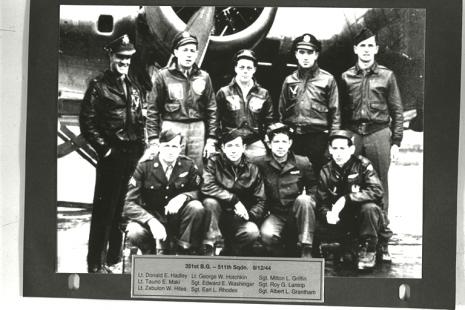
Tauno E. Maki of Ely, Minnesota, enlisted in the Army Air Corps in September of 1941.
He served as a Staff Sergeant and an airplane and engine mechanic, crew chief, Air Transport Command in Brazil. He returned to the U.S. in 1942 for flight training. He was then commissioned a 2nd Lieutenant and was a multi-engine pilot and co-pilot with the 351st Bomb Group, 8th Air Force, in England and Europe.
He was shot down in Belgium on September 12th on his second mission. Later he returned to combat and flew 35 missions in northern France, Rhineland and the Ardennes.
Mr. Maki was awarded the following: Air Medal with five Oak Leaf Clusters, Presidential Unit Citation, European-African-Middle Eastern Campaign Service Medal with three bronze battle stars, American Defense Service Medal and the World War II Victory Medal.
He was honorably discharged in October of 1945. He returned to Europe in 1994 for the 50th reunion of Belgian liberation.
Source: Hometown Heroes: The St. Louis County World War II Project. 187.
The following was taken from the St. Louis County Historical Society’s Fall 1994 Newsletter. It was written by Tauno E. Maki, a resident of Winton, MN. Tauno is a writer on regional history and life-member of the Ely-Winton Historical Society.
"From September 6th through September 12th, 1994, the good citizens of La Bruyere, province of Namur, welcomed four surviving American airmen and their wives to Belgium with open arms. Seven other towns in this region (Bovesse, St. Denis, Meux, Villers-Lez Heest, Warisoulx, Emines, and Rhisnes) also participated in gala festivities marking the golden anniversary of the liberation of La Bruyere by honoring a bomber crew that had crash-landed in Villers-Lez Heest on September 12, 1944."
"The emotional impact of being embraced, wined, dined, and paraded through these towns as heroes was dramatic, to say the least. The affection, gratitude, and concern bestowed on us was beyond anything that I could adequately describe. Pilot Donald Hadley, Navigator Zebulon Hites, Gunner Milton Griffin, and myself, copilot, were the guests of honor. Fifty years ago we were part of a nine-man B-17 crew, the 8th Air Force 351st Bomber Group, that would ultimately complete 35 missions over Germany. It was on our second mission that our crippled plane went down in Belgium; we were able to return to our airbase in Polebrook and resume flying."
"The 50th Anniversary of the liberation of La Bruyere was the culmination of several years of preparation. A celebration of joy and sorrow, it reminded the world that freedom from Nazi oppression did not come easily. Our presence as guests was their way of thanking America and the Allies for this freedom. We had, in effect, become ambassadors for the U.S.A."
"A monument to our bomber crew was unveiled at the crash site, near another monument honoring seven Belgian resistance fighters captured by Nazi troops and executed just days before our crash. We paid silent tribute to our deceased comrades, American and Belgian, and I embraced a gracious lady who pointed out the name of her husband as one of those killed."
"One of the many memorable highlights was a replica B-17 with 12-foot wingspan. The replica was transported by flatbed truck marked with a triangle “J” and our serial number, along the parade routes of seven towns. We signed out names directly on the model at our appropriate crew positions."
"In the days to follow we would autograph hundreds of copies of Mort d’Une Forteresse, a book about our crew and the downing of our B-17 written by Andre-Marie Lebrun. We attended a Sunday morning Solemn Mass in a centuries-old church in St. Denis, commemorating the war dead and the support of Allied forces. During the services we all stood to sing the "Star Spangled Banner.” All subsequent events had a profound and lasting impact."
"A visit to Luxembourg and Bastogne to see the American cemeteries was awe-inspiring. Etched in immense granite columns are names of airmen from bomber and fighter groups of the 8th and 9th Air Forces, as well as countless names of Americans in airborne and infantry divisions who lost their lives. They are buried here in immaculate lawns of green velvet amid endless perfect lines of crosses. Here we saw the grave of General Patton."
"At Bastogne, we became part of a huge diorama depicting events of the Battle of the Bulge; we traveled through the Ardennes and saw exhibits on one of the most decisive battles of WWII. We dined on bread and cheese and beer at the Abbey of Maredsous, founded in 1872. In Namur, our group went deep underground in the tunnels and caverns of one of the most famous citadels in Europe. We were escorted to many exhibits and luncheons and had the opportunity to meet with hundreds of Belgian people."
"We even visited the Belgian Eurospace Center and studied the instrumentation in a Space Shuttle simulator. There I had the unique opportunity to strap myself in a moon walk simulator and bounce along a wide expanse of floor as if I walked on the moon! It was indeed a momentous and unforgettable visit. We were humbled but proud – fortunate to participate with so many wonderful Belgian people in the 50th Anniversary of the Liberation of La Bruyere in the province of Namur."

